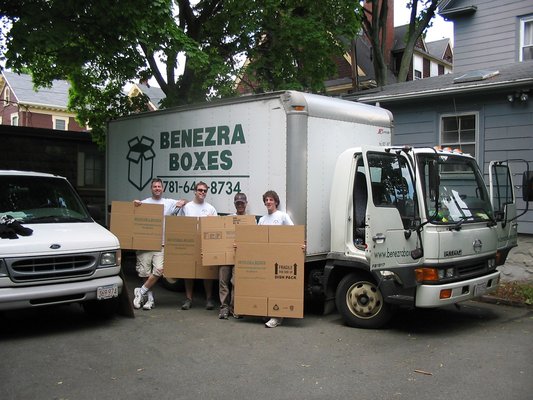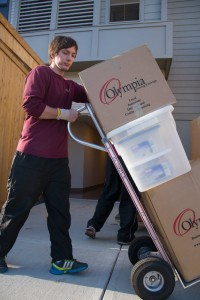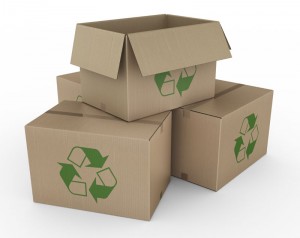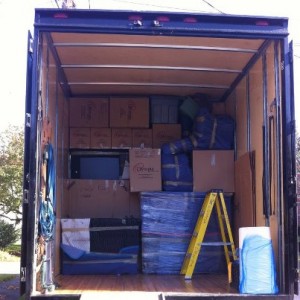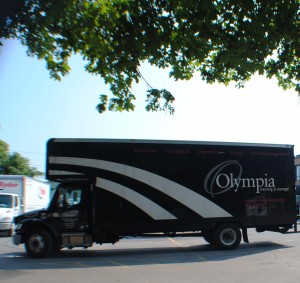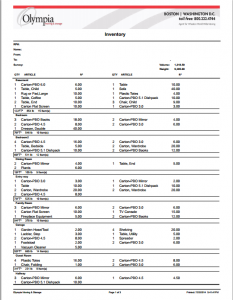 When you call a reputable moving company, they’ll work with you to create a cube sheet (also known as an estimated inventory) for your move. A cube sheet is a list of all the furniture and boxes that you plan on including in your move.
When you call a reputable moving company, they’ll work with you to create a cube sheet (also known as an estimated inventory) for your move. A cube sheet is a list of all the furniture and boxes that you plan on including in your move.
In this article, we’ll explain what a cube sheet is, what it’s used for, and how to read one.
Creating the Cube Sheet
For most Olympia clients, the cube sheet will be created when the the sales consultant meets you at your home for the survey. He’ll do a walk through of your home, consulting you throughout on what you plan on moving. Meanwhile, the consultant will enter all your furniture and estimated number of boxes into his or her tablet. Our sales consultants can enter the information into their tablets extremely quickly using specialized moving software.
For smaller moves, such as one bedroom apartments, the sales consultant can complete the estimated inventory by going room by room with you over the phone and discussing what needs to be moved. Our sales consultants are all trained to ask the right questions to guide you through the process and ensure that we have the level of detail needed to provide you with an accurate quote.
Depending on the size of your home and complexity of your move, it can take 10 to 45 minutes for the consultant to put together the cube sheet live on site.
Our moving software contains hundreds of types, sizes, and variations of furniture pieces and boxes. So when the sales consultant adds a furniture piece to your inventory, the software knows what the average cubic feet is for that furniture piece. The software then produces a document with the subtotals and totals of cubic feet for your move. The total cubic footage is the main piece of information the sales consultant will use to plan and estimate the cost for your move.
When the walk through is finished, the sales consultant will produce the estimated inventory. This is called a cube sheet within the moving inventory because essentially what needs to be determined is the volume, or cubic feet, of all the items that need to be moved. This information is used to determine how many trucks and crew members are required for the job, and if it’s an interstate move, what is the estimated weight of the move.
Reading a Cube Sheet
Click here to see what a sample cube sheet looks like. To make it clear for the consultant and client to read, the inventory is divided by room. There are three columns. The first column is the quantity of the item, or how many of each item is in that room. The second column is the description of the item. The third column is the estimated volume, or cubic feet, of that furniture item.
The cube sheet also contains information on packing. Some boxes will say “PBO” in the description, which means “packed by owner.” That means that we are entering the box so that it’s included in the total cubic footage, but the client plans on packing the box themselves. Others will say “CP” in the carrier description, which means “carrier pack.” That means that Olympia will be providing and packing that box. A container summary at the bottom of the inventory will list all the boxes Olympia will be packing and providing for your reference.
The estimated inventory is provided to you along with the quote for your reference. Olympia recommends that all our clients check over the inventory to ensure that it’s fairly accurate. Remember, this is what your sales consultant is basing their estimate on, so if the inventory is inaccurate, that means the sales consultant didn’t have the correct information for your quote. Being on the same page as our clients for what’s being moved is important to Olympia, that’s why we take the time to create the estimated inventory with you, and give it to you for your reference. If anything changes between the time of survey and your move, be sure to let the sales consultant know so he can adjust your estimate accordingly. Major changes such as adding or removing large furniture pieces or many boxes can make a difference in our planning for your smooth move.
Do I Need a Cube Sheet?
If a moving company refuses to put together a cube sheet or estimated inventory to plan your move, that is a red flag that you are not working with a reputable company. A good moving company will take the time to understand and plan your move before providing you with a moving quote.
Also check out:

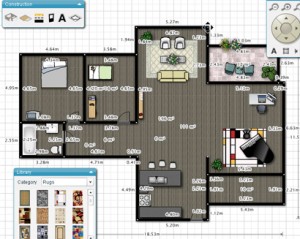

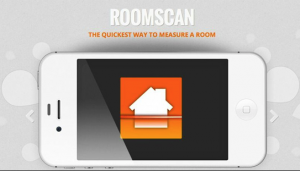
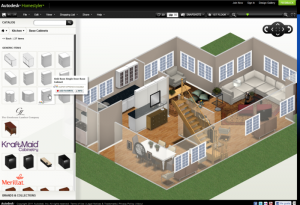
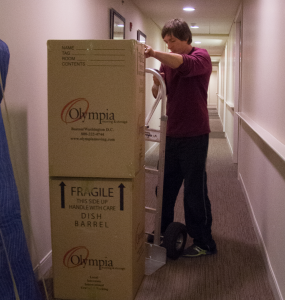 It’s not uncommon that Olympia Moving & Storage has to provide a Certificate of Insurance (COI) for our clients’ moves. But what exactly is a certificate of insurance, and do you need one for your move?
It’s not uncommon that Olympia Moving & Storage has to provide a Certificate of Insurance (COI) for our clients’ moves. But what exactly is a certificate of insurance, and do you need one for your move?

